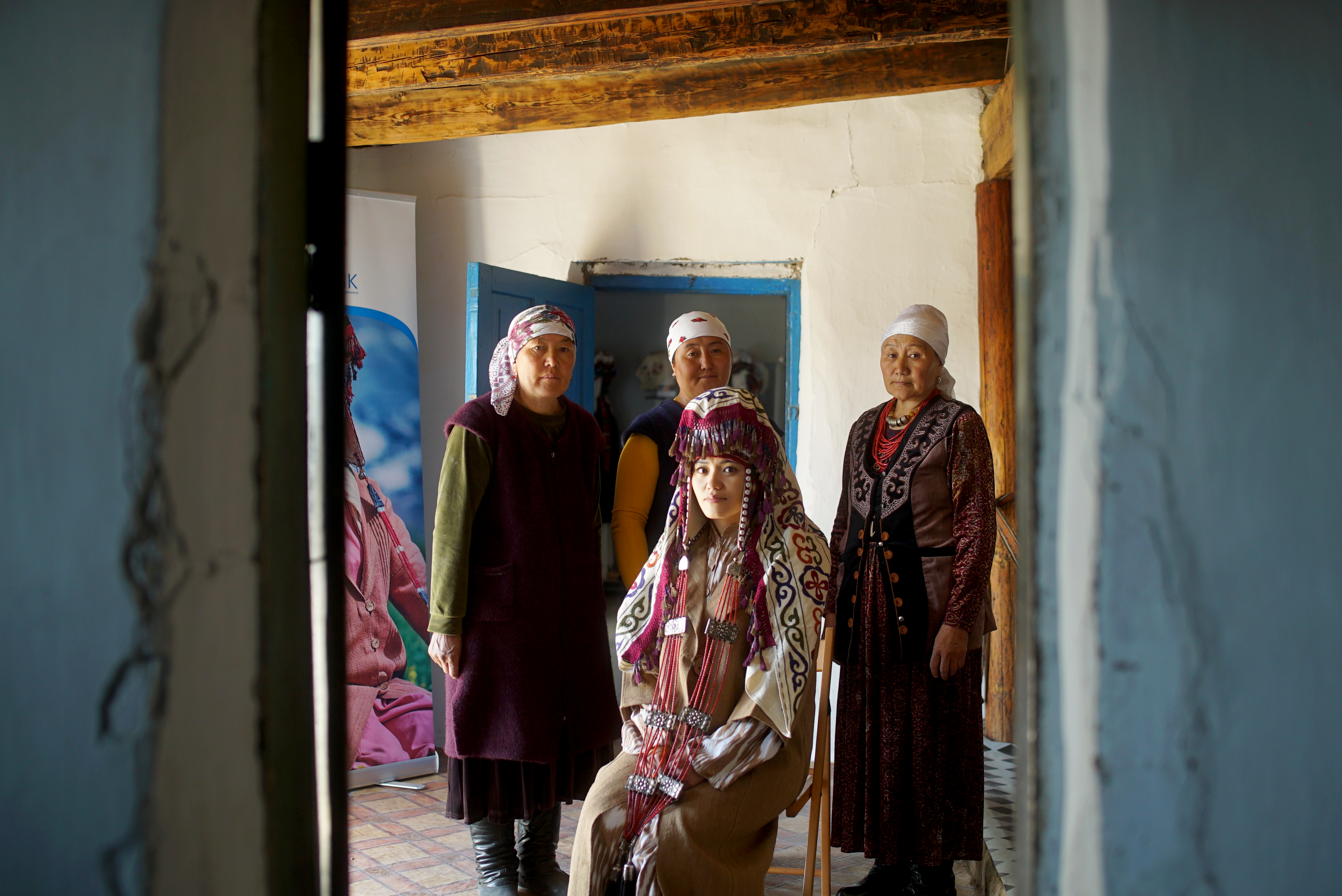
Life of Artisans on the Ancient Silk Road
The film “Road of Hope and Heritage” opens with a shot of distant mountain range covered by clouds. The wind and light over the mountains create impressions of kurak, a Kyrgyz traditional patchwork. Kura in Kyrgyz language means to patch, or to combine separate pieces together, creating a single canvas.
The stories of craftspeople and musicians in the Cultural Heritage and Humanities Unit’s recent film directed by Aibek Bayimbetov (researcher at UCA), are also pieces of a patchwork creating a bigger picture of the trials, tribulations, and hopes of people living along the ancient Silk Road.
Over the course of centuries, the Silk Road has connected Asia and Europe through an intricate network of paths. The current interest in renewed trade between Central and Southeast Asia has created opportunities for further infrastructural developments.
The film shows the faces of representatives of mountain communities in the Alai region of Kyrgyzstan and Gilgit-Baltistan of Pakistan: craftspeople at work talking about their trade and handicraft skills inherited from their ancestors. A woman from Alai talks about how the harsh climate and elevation do not allow her to grow agricultural products, so the small village relies on profits from mountain tourism and handcrafts. A farmer expresses concerns about the proximity of huge industrial mining projects near his village: the extraction brings dust and deteriorates mountain pastures in Kok-Suu. On a different part of the road, a local researcher talks how the ethnic Kyrgyz and Wakhi people have been sharing the same space for centuries in the Pamir mountains.
Later in the movie, Cholpon Alamanova, a professional artist and Kyrgyz kurak maker, travels to Gilgit Baltistan to share her art with local craftswomen. Language and cultural differences seem to disappear when craftspeople share their work. The camera intimately captures closeups of women exchanging glances and laughter while engaging in their craft.
According to the creators of the film, this project discovered a common thread among mountain communities in Kyrgyzstan, Tajikistan, and Pakistan because of similar mountain geography and culture. At the end of the film, the director asks the participants: what does it mean to be happy? Karim-Ulo-Khan, a local researcher from the Sost village in Gilgit Baltistan, gives a simple recipe: “Happiness lies in good words, good deeds, and good wishes”.
The Road of Hope and Heritage is an ethnographic documentary produced with the support of the Resilient Silk Road Heritage Network Project funded by the UK's Global Challenges Research Fund (GCRF). The GCRF project links local organizations and academic institutions in Pakistan, Tajikistan, and Kyrgyzstan to help develop resilient local economies and sustainable mountain societies. The GCRF Network also aims to develop a stronger South-South collaboration and knowledge sharing platform for building lasting networks for communication and future development.
The film will be shown during the travelling exhibition of Central Asian artists in Bishkek, Tashkent, Dushanbe, Almaty and Peshawar in February-March 2022, and will be available later on UCA’s YouTube channel.













